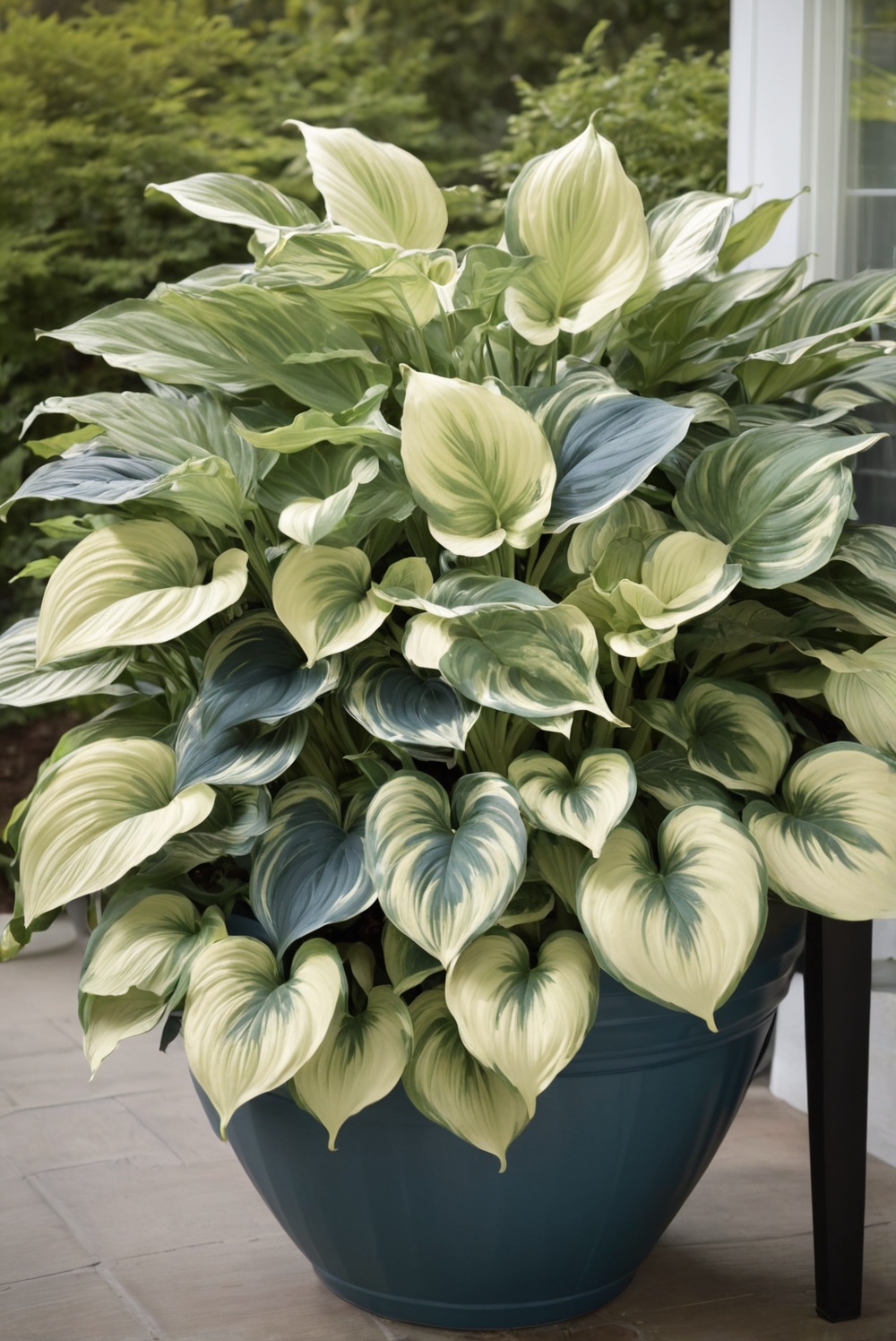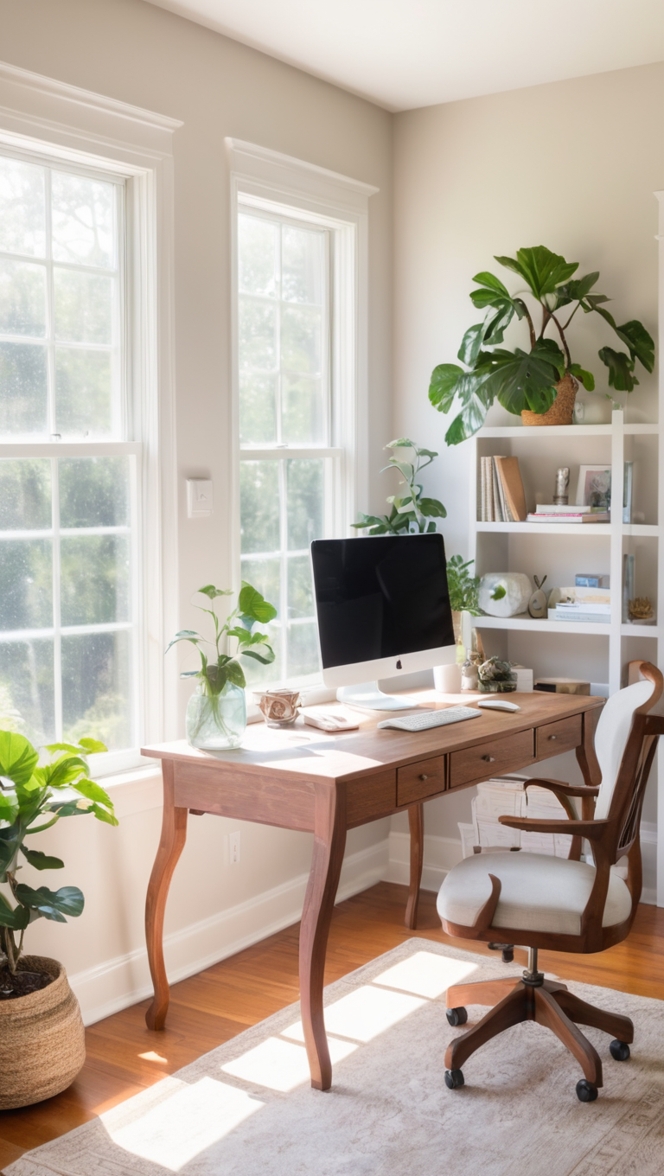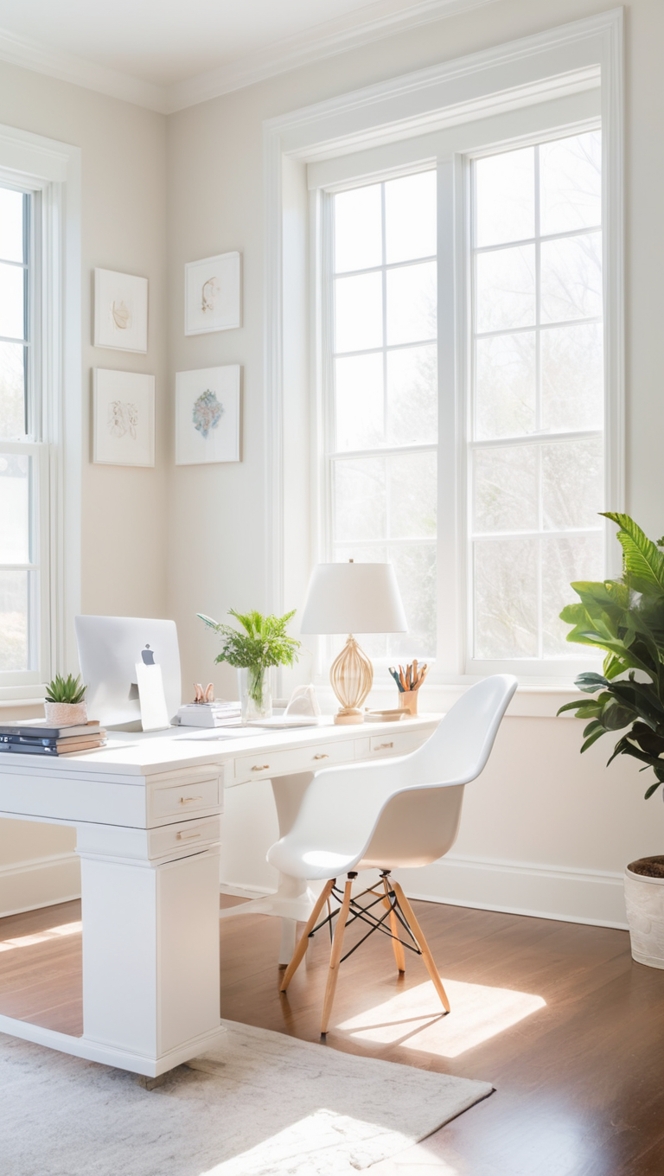Discover the art of combining green and blue hues to create breathtaking potted hostas. Unleash your creativity and enhance your outdoor space with these stunning plant arrangements.
To create stunning potted hostas with green and blue accents, you can start by selecting hosta varieties that have both green and blue-hued leaves. These can create a visually appealing contrast in your potted arrangement. Choose pots that provide enough space for the hostas to grow and ensure they have proper drainage holes.
Additionally, consider incorporating other plants with green or blue flowers to complement the hostas. This can enhance the overall look of your potted garden. Regular watering and fertilizing will help your hostas thrive and maintain their vibrant colors.
Lastly, place your potted hostas in a location that receives partial shade, as hostas prefer this type of environment. By following these steps, you can create a beautiful and harmonious potted display in your garden.
Hostas are versatile plants that can thrive in a variety of environments, including pots. Potted hostas not only add beauty to your patio but also provide an easy way to enjoy green and blue accents in your outdoor space. If you’re considering growing hostas in pots, here’s a guide to help you create stunning potted hostas with green and blue accents.
Choosing the Right Size of Pots:
When selecting pots for planting hostas, consider the mature size of the plant. Hostas come in various sizes, from small varieties that reach just a few inches in height to larger types that can grow up to several feet tall and wide. To accommodate the root system and ensure proper growth, choose pots that are at least 12 inches deep and wide for smaller hosta varieties. Larger hostas may require pots that are 16 inches or more in diameter. Make sure the pots have drainage holes to prevent waterlogging, which can lead to root rot.
Growing Hostas Indoors:
While hostas are typically grown outdoors, you can also grow them in pots indoors. To successfully grow hostas indoors, place the pots near a window where they can receive bright, indirect sunlight. Maintaining a consistent temperature between 65-75°F is ideal for indoor hostas. Ensure good air circulation around the plants to prevent diseases. Remember to water the hostas when the top inch of soil feels dry and provide humidity by misting the leaves occasionally.
Best Soil Mix for Planting Hostas in Pots:
Hostas prefer well-draining, fertile soil that retains moisture. A good soil mix for planting hostas in pots consists of equal parts of high-quality potting soil, peat moss, and perlite or coarse sand. This mix provides a balance of nutrients and drainage to support healthy hosta growth. Avoid using heavy garden soil or compacted clay in pots, as it can hinder root development and drainage.
Watering Frequency for Hostas in Pots:
Proper watering is essential for the health of potted hostas. Water the plants when the top inch of soil feels dry to the touch. During hot summer months, hostas may require more frequent watering to prevent drying out. However, avoid overwatering, as this can lead to root rot. Using a saucer under the pot to catch excess water and avoid waterlogging can help maintain proper soil moisture levels.
Benefits of Using Hostas in Pots for Patio Decoration:
Potted hostas offer several benefits for patio decoration. Their lush foliage and vibrant green and blue hues add visual interest to outdoor spaces, creating a calming and relaxing atmosphere. Hostas are low-maintenance plants that require minimal care, making them ideal for busy gardeners. Additionally, potted hostas can be easily rearranged to suit different patio layouts or design themes.
Risks and Challenges of Growing Hostas in Pots:
While hostas are generally easy to grow, there are some risks and challenges associated with growing them in pots. Potted hostas may be more vulnerable to temperature fluctuations, which can stress the plants. Pests such as slugs and snails are also attracted to hostas and can damage the foliage. To mitigate these risks, monitor the plants regularly for signs of stress or pest infestations and take appropriate measures to address them.
Proper Care for Hostas in Pots:
To ensure that your potted hostas thrive on the patio, provide them with proper care and maintenance. Here are some essential tips:
– Place the pots in a partially shaded location to protect the hostas from direct sunlight, especially during the hottest part of the day.
– Fertilize the hostas with a balanced slow-release fertilizer in spring to support healthy growth.
– Remove dead or yellowing leaves regularly to promote air circulation and prevent disease.
– Divide overcrowded hostas in pots every few years to maintain plant health and vigor.
In conclusion, potted hostas can be a stunning addition to your patio, providing green and blue accents that enhance the beauty of your outdoor space. By following the tips outlined in this guide and giving your hostas the care they need, you can create a thriving and visually appealing container garden that showcases the beauty of these versatile plants.








